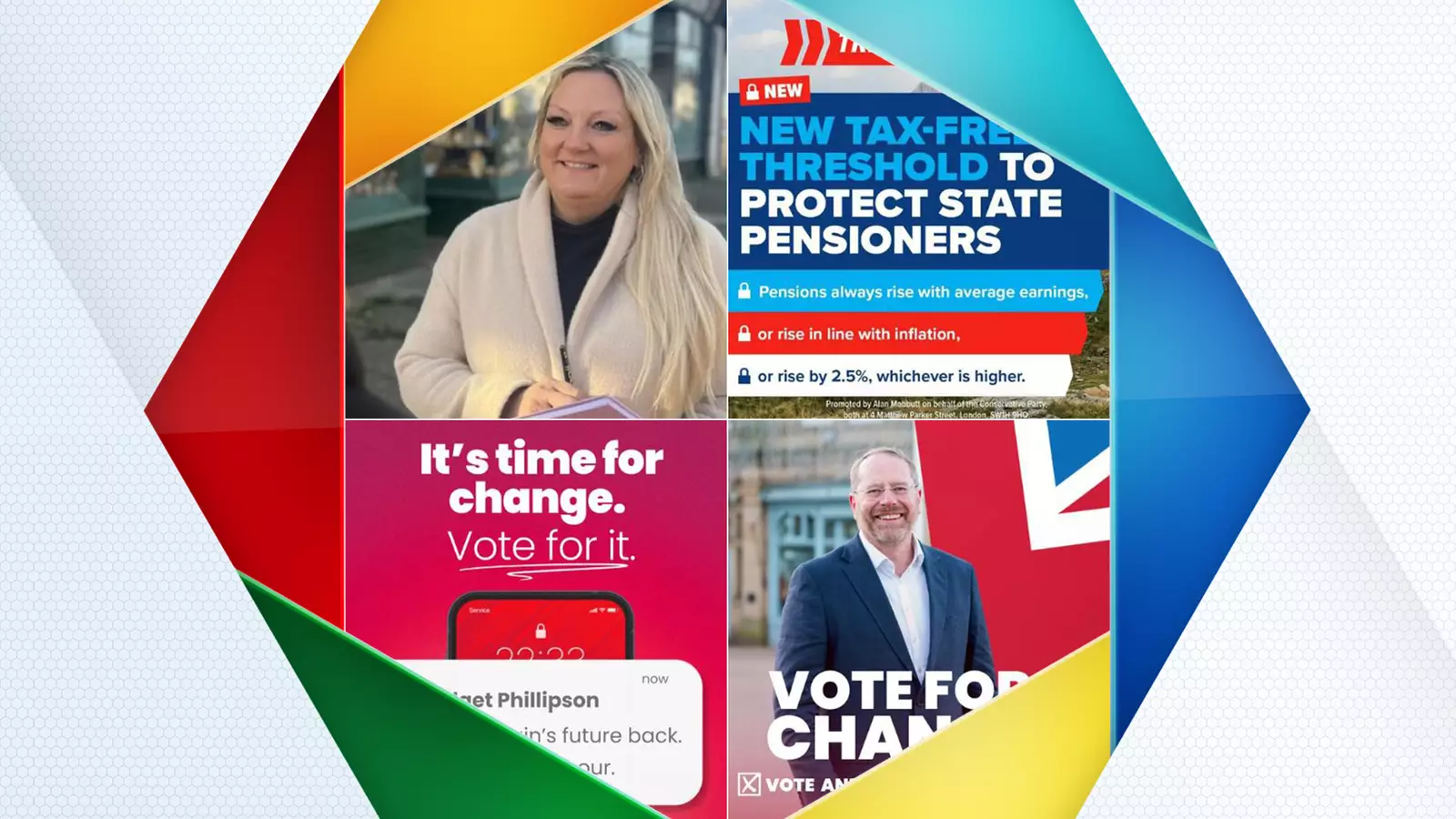In recent research conducted by Sky’s Online Campaign Team and Who Targets Me, it was revealed that a surprising number of Conservative candidates are avoiding the use of their own party’s branding in their online adverts. The study looked at the adverts published on Facebook and Instagram by 521 Labour and Conservative candidates between May 1 and June 12. Of these adverts, 376 contained official branding, 104 had partial branding, and 41 had no branding at all. What was particularly notable was that the vast majority of the adverts with no branding were from Conservative candidates.
Out of the 80 Conservative MPs who used partial branding, a significant majority only mentioned the party in the funding disclosure, as required by law. This means that the actual text and visuals of the adverts did not clearly indicate that they were Conservative candidates. On the other hand, all 19 Labour MPs included clear party branding in their adverts, making it easy to identify them as Labour candidates. This lack of branding among Conservative candidates was not limited to online adverts, as seen in examples like Johnny Mercer whose election leaflets completely avoided Conservative branding.
Unconventional Strategies
Some Conservative candidates, like Andrea Jenkyns, have taken a more unconventional approach by including elements that deviate from traditional party branding. For example, Jenkyns’ leaflet prominently features a picture of her with Nigel Farage, leader of a different party. This departure from standard party branding may be an attempt by some Conservatives to appeal to a broader base of voters, or to distance themselves from the negative perceptions associated with the Conservative brand.
It is important to note that the majority of Conservative candidates still use party branding in their adverts. However, the fact that a significant number of them are choosing to avoid or minimize branding raises questions about the effectiveness and perception of the Conservative brand. The study also found that other political parties, like the Lib Dems, Green Party, Reform Party, and Sinn Fein, consistently used full branding in their adverts, indicating a stronger adherence to party identity.
The trend of Conservative candidates avoiding their own party branding, especially in online adverts, raises concerns about the state of the Conservative brand. Whether this strategy is effective in appealing to voters or is a sign of dissatisfaction with the party’s image remains to be seen. This data-driven analysis sheds light on an intriguing phenomenon within the realm of political advertising, highlighting the complex strategies employed by candidates to connect with voters.


Leave a Reply